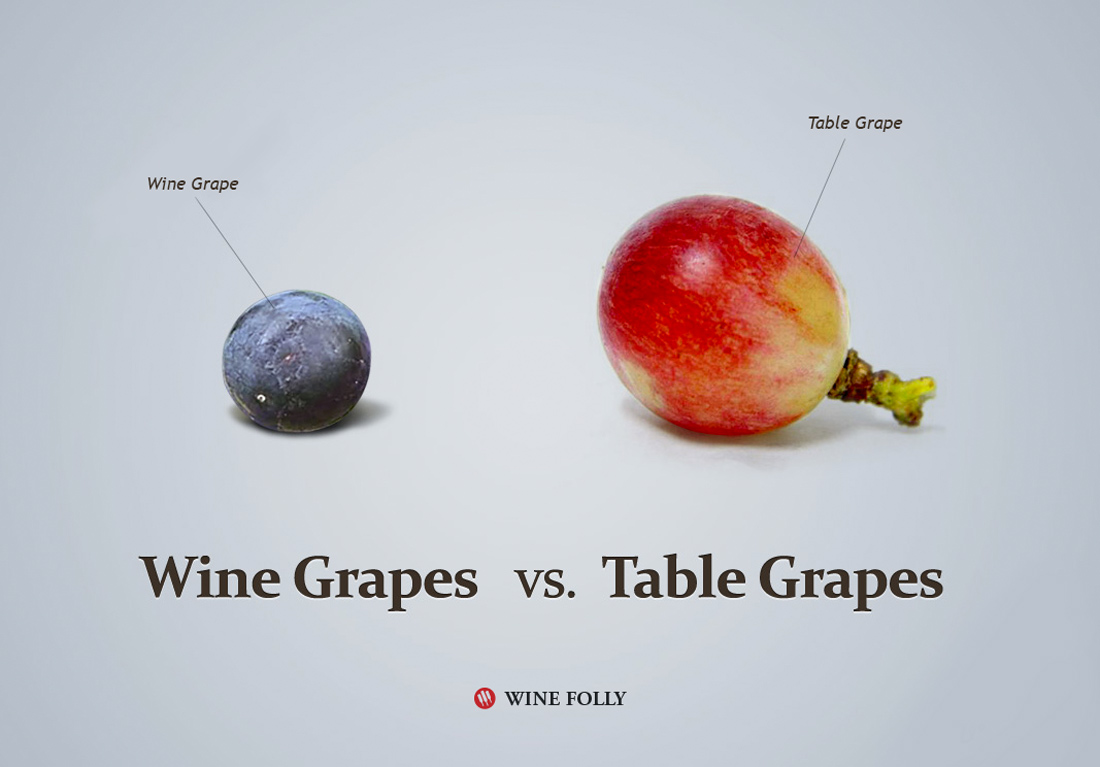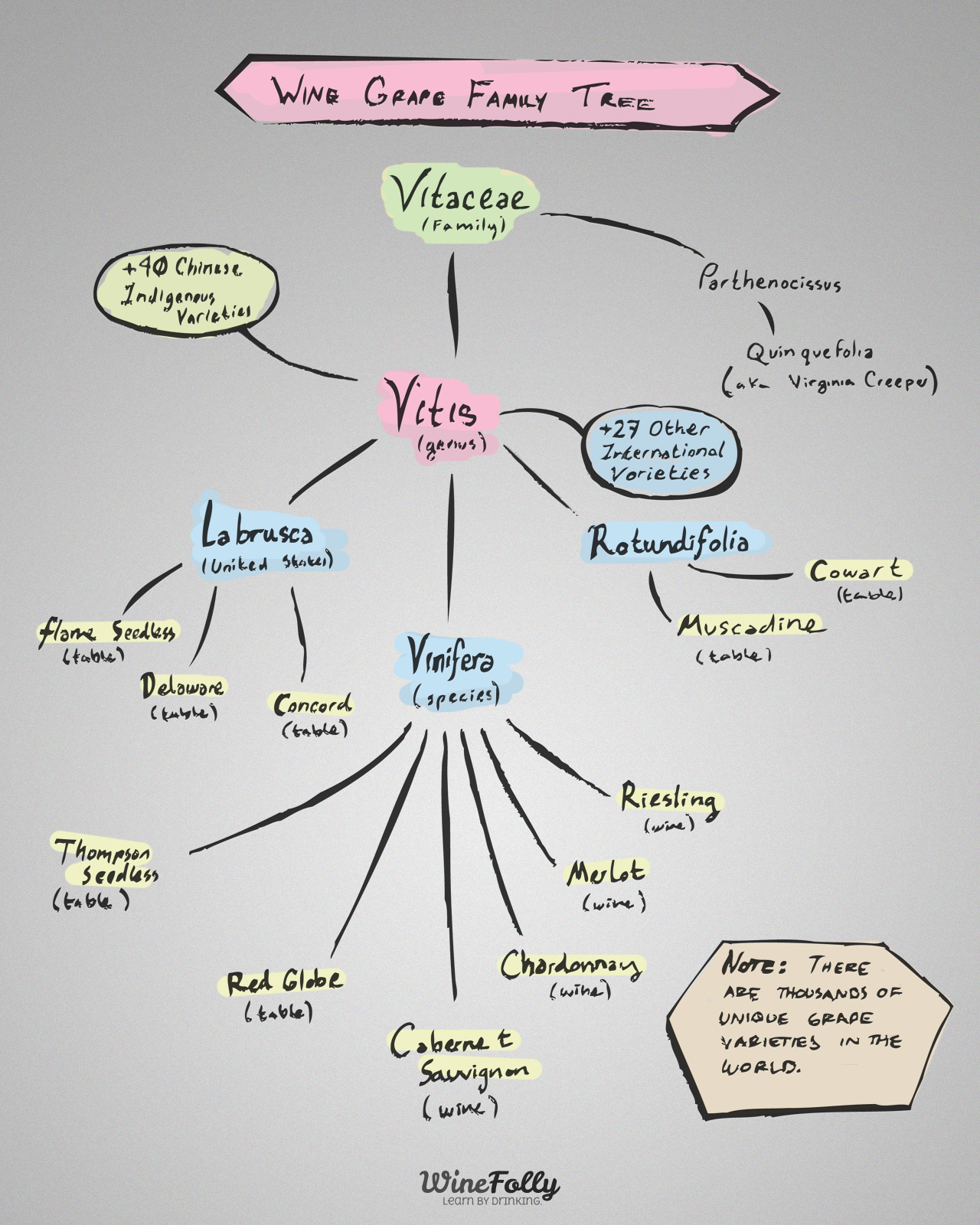
Table Grapes Are Fat and Sassy. Table grapes are grown in a way to make them more physically appealing. They are larger, seedless, with thicker pulp and thinner skins to give them that ideal ‘pop’ when you eat them. Table grapes have less acidity and also less sugar than a wine grape.
Wine Grapes Are Lean and Mean. Wine grapes are grown to produce the sweetest and most potent grapes. They are smaller, riddled with seeds, have thicker skins and higher juice content (vs. pulp). Wine grapes are delicate and difficult to transport. When you eat a fresh wine grape, they ooze apart, leaving you with crunchy bitter seeds and chewy grape skin.
Standard eating grapes have a Brix level of 17-19, whereas wine grapes are closer to 24-26 Brix at harvest. Brix is the scale to measure percentage of sugar in a liquid.
Seedless grapes are easier to eat, but they are less flavorful than seeded table grape varieties.
Most commonly cultivated grapes are Vitis vinifera
About 90% of cultivated grapes in the world are Vitis vinifera. Vitis vinifera is commonly called The European grapevine which has ancestral roots in Iran. It includes wine grapes like Cabernet Sauvignon and table grapes like Red Globe grapes.
The Wine Grape Family Tree
Table grapes and wine grapes are related to one another through their genus Vitis. More than 70 different species are within the Vitis genus, including the most common, Vitis vinifera, to the more ornamental, Vitis californica. All wine grapes are Vitis vinifera. Proof of 40 species exists of grapes indigenous to China.

Identify Table Grapes vs Wine Grapes in The Vineyard
Next time you’re driving through vineyards, you can identify the type of grapes (table grapes vs. wine grapes) by looking at the trellises.

Wine grape vineyards
Wine grape vineyards commonly use vertical trellises to manage the greenery (aka canopy) and grape exposure to the sun. The goal with wine grapes is to concentrate the flavor of the grapes produced.
Managing vine vigor is important for wine grape growers. Vine vigor is how productive a vine is. An overly vigorous vine will produce a lot of average quality grapes; a lower vigor vine will produce fewer more concentrated grapes. More concentrated grapes = better wine.

Table grapevines
Table grapes are grown in a way to reduce clusters from rubbing other clusters, stems, or leaves. A trellis system that lets the grapes hang independently is better for producing picture table grapes. Table grapes tend to be more vigorous than wine grapes and grow in areas with soils high in nutrients such as river valleys.
A single mature Cowart muscadine (Vitis rotundifolia) table grape vine can produce 15-30 lbs of grapes per vine. A mature Zinfandel (Vitis vinifera) wine grape vine produces about 8-12 lbs of grapes per vine.
